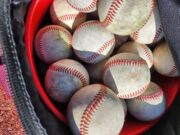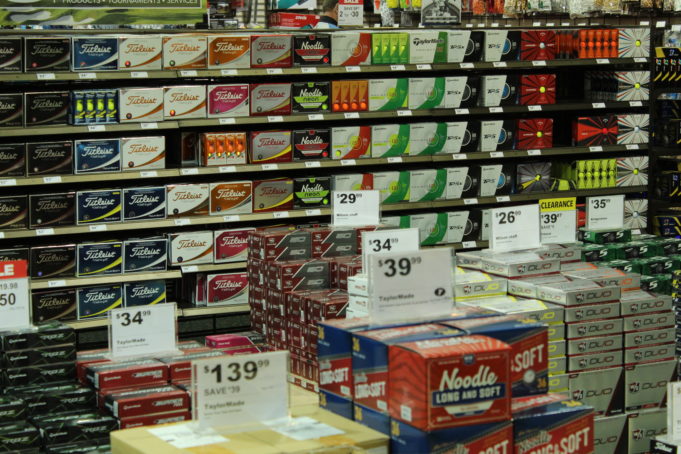Are you having a ball on the golf course these days? If not, maybe it has to do with the ball you have.
When it comes to buying a golf ball, consumers have dozens of choices as to what dozen they want to tee up. It really is the most important piece of equipment for a golfer because it’s the one item you use for every shot. But all those choices!
“Every manufacturer has a golf ball built for a certain player that’s going to give you a certain result,” says Chris Melbourne with Red Deer’s Golf Town outlet.
So, the process of getting the right ball starts with defining what you need off the tee, around the green, what type of player you are and where you normally miss a shot. It’s getting personal.
Once all this information is compiled there is a much better chance of getting you playing a ball which best suits your game.
The science which goes into a golf ball these days could make a person dizzy trying to figure it out on their own, so you need a person like Chris to get you on the right path (he describes himself as a golf ball nerd).
“If we’re looking at someone with a driver, we’re trying to get the spin rate (the spin created as the ball comes off the face of the club) to a proper amount to help you hit it straighter off the tee and longer off the tee,” said Melbourne. “If I’m talking to someone who is really struggling with their wedges, we’re going to look at a golf ball that’s maybe a different construction or a different feel to give you a bit more confidence around the green.”

Within 15 to 20 minutes of hitting a few shots with a wedge, mid-iron and a driver he can narrow down your choices, so you can then head out to the course with a selection of balls to give it the real litmus test.
Sounds simple enough right? Well, back to the science lab for a moment.
The spin rate of a ball essentially comes from two main factors-what the ball is made of and the compression of that golf ball. In layman’s terms it means how tightly the core threads of the ball are wound. Really tight means a harder ball while softer golf balls are wound more loosely.

The prevailing line of thinking is better players use a higher compression ball and those weekend warriors use the softer ones. These days players of all levels tend to use a favorite ball, no matter what the compression. The general rule of thumb seems to be swing speed determines to a certain extent what ball you should use however.
For example, someone with a swing speed of 70mph would be fine using a 70-compression ball, 80 mph an 80 compression and 90 to 100, the highest compression ball. Having said that, there are some players on the PGA Tour who use a ball which comes in at around 60 compression.
“People don’t think compression is a good thing for everyone, but it actually is. Most people will benefit from a golf ball that compresses more because when you hit a golf ball on the face, if it’s not in the centre of the face the golf ball is going to tend to slide off,” explained Melbourne. “If you use a hard golf ball it’s going to slide off the face more. If you use a softer golf ball it’s actually going to compress more into the club and come off the face straighter.”
Ah yes-straighter. It’s a word which gets most golfers almost as excited as the word longer.
There is also the construction of the ball to consider. Some have a cover comprised of a material called surlyn which is durable and reduces the number of nicks and blemishes just in case you inadvertently strike a cart path, rock, tree or a building. The cost paid is a reduction in the amount of spin you impart on the ball.
The other material is urethane which is a thinner material and doesn’t last as long but it spins a lot more.

“The more expensive golf ball you get into there’s more layers,” said Melbourne. “The golf ball will separate differently. A lower price point golf ball is two or three pieces whereas a higher end golf ball is four or five pieces.”
Without getting all techy, each layer has a job to do when you strike the ball. More layers means more spin. Got that? Good.
We know there are many players out there who play what ever they find in the bag or stumble across on the course (usually looking for their own ball). Melbourne says if you play the same ball all the time you will benefit from the consistency as opposed to hitting several different balls in a round or two.
“If I can get you a ball that spins more around the green then you are hitting wedges to ten feet instead of 15 and you might make more of those putts. If you are hitting on average four or five fairways a round and we can get you hitting seven or eight fairways per round, then your chances of scoring a bit better increase,” he said. Does that get your attention?
The truth of the matter is for some they may not see any difference, but what do you have to lose to get fitted for a ball? Maybe a ball or two.
It’s something to think about the next time you tee one up.







































